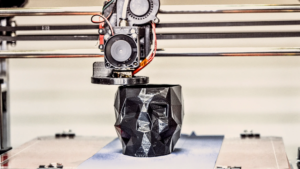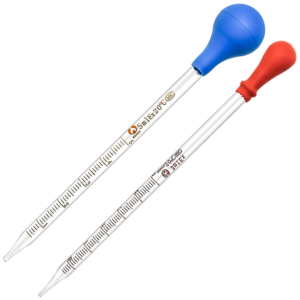3D printing is a layer-by-layer fabrication technique that doesn’t use blocks of material or molds. It’s typically fast with nearly zero fixed setup costs, allowing for rapid prototyping and lightweight geometries. Click the https://www.by3design.com/ to learn more.
Fused filament modeling (FDM) 3D printers extrude thermoplastic polymers such as ABS, Nylon, and PLA through a heated nozzle, melting the plastic to apply it layer-by-layer to build your product. This is the most popular consumer printer type.

3D printing can potentially transform many industries by enabling new design and manufacturing methods. In addition to providing greater flexibility, speed, and efficiency, it enables companies to achieve significant cost savings by reducing production and storage costs.
The rapid evolution of 3D printers enables the production of materials with unique properties and applications. For example, new polymer powder beds are allowing for high-resolution prints approaching molded part quality. Furthermore, advancements in metal additive manufacturing (AM) are allowing the production of graded and high-entropy alloys that aren’t feasible in traditional melt processing.
As a result, companies are increasingly turning to 3D printing for prototyping, which reduces the time and expense of creating new product designs. It also allows them to test fit-up and functionality in ways that would be impossible or prohibitively costly using conventional methods.
Consumer goods and consumer electronics manufacturers are leveraging 3D printing to respond quickly to evolving customer demands and industrial trends. 3D printing enables them to quickly implement design changes that may have taken months with conventional manufacturing, and also produce complex prototypes to enable rigorous testing.
For healthcare, 3D printing provides the ability to create patient-specific implants and prosthetics that are tuned precisely to an individual’s anatomy, improving their fit and function. It also enables surgeons to use 3D-printed anatomical models, derived from CAT-scan data, to visualize patients’ anatomy and plan operations, which improves learning/planning, increases accuracy, reduces surgery time, and ultimately improves treatment outcomes and quality of life.
In the building industry, large-format 3D printers are being used to fabricate structural components such as walls, floors, and bridges in centralized facilities, resulting in reduced material waste and shorter construction times compared to conventional methods. 3D printing can also allow architects to design and build more complex or non-conventional shapes that aren’t possible with conventional building methods.
In addition, bioengineers are developing new methods for on-demand printing of living tissue, blood vessels and bones. This could revolutionize medical procedures and transplantation. By enabling the printing of replacement tissues that closely match an individual’s natural characteristics, it may also lead to the development of custom-made organs, which will improve the survival rate after transplantation and increase the number of viable donors.
Customization
3D printing, or additive manufacturing (AM), transforms digital design into a physical object through layer-by-layer fabrication. This allows manufacturers to produce highly customizable products with a minimal upfront investment. It also reduces production costs by eliminating the need to create molds and tooling.
The result is a more efficient and cost-effective process that’s ideal for rapid prototyping. It allows engineers to test and experiment with designs without having to invest in the expensive production of a full-scale model. This speeds up the research and development cycle and improves product performance before committing to large-scale production.
This is especially useful in fields such as automotive engineering, where 3D printed prototypes can be used to test and evaluate new design concepts quickly and effectively, significantly shortening development times. Similarly, 3D-printed prototypes can be used by medical professionals to help create custom-fitted hearing aids and prosthetics for patients, improving both comfort and functionality.
Another benefit of using 3D printed models is that it helps educators and students visualize and understand complex geometrical structures, such as anatomical models. This provides a clearer, more comprehensive understanding of the subject matter, while at the same time allowing learners to be creative and explore different designs and ideas. This is why a number of schools have started to integrate 3D printers into their curriculum, updating their traditional sculpting and CAD courses for the 21st century.
For example, a student could use a 3D printer to make a scaled-down model of the Eiffel Tower or a historical building, so that they can study it in more detail and see how it would fit inside the space. This is a great way to get students excited about learning and inspire them to think outside the box.
The spectrum of materials available for 3D printing is vast, from flexible polymers to sturdy metals and ceramics. The material used and the density of the print determines its strength and durability, as well as how much it will cost. Other factors that affect the price of a 3D print include the percentage of “infill” and waste, as well as the complexity of the model. Efficient printing techniques and intelligent design can minimize these costs.
Strength & Lightness
For centuries, we thought that industrial production couldn’t take place without factories, machines and assembly lines. Yet it can and does with 3D printing, which eliminates the need for tools and inventory. This is a major advantage, especially when it comes to prototyping and new product development. Rather than produce and invest in new tooling each time, engineers can make small changes to prototypes, quickly evaluate and test them, and fine-tune their designs to avoid costly revisions down the line.
3D printing allows for the creation of parts with complex geometries that would be difficult to fabricate using traditional methods. For example, it is possible to create lattice structures with internal voids for lighter weight, or to add support structures to reinforce a part’s structure. This can lead to stronger, more durable products that are less likely to break or deform.
The strength of 3D printed parts depends on the materials used and the print process. Metals, for instance, are much stronger than plastics, and are often used to create functional parts that require greater strength. For this reason, the use of metals for production is on the rise in industries like automotive, aerospace and healthcare.
Another important factor in determining the strength of 3D prints is the speed at which the material solidifies. If the solidification rate is too slow, the parts will be brittle and prone to failure. Similarly, if the print process is too quick, the layers will adhere to each other instead of bonding with the surrounding material.
Changing the print temperature or the cooling rate can also help improve the strength of a part. For instance, a slower cooling rate can help prevent the formation of heat-sensitive microvoids in the layer.
Finally, techniques like topological optimization and generative design can help improve the strength of 3D printed parts by designing them to distribute stress evenly. This can be achieved by orienting the part’s geometry to take advantage of local stresses, or by adding material where it will provide structural benefit and removing it where it won’t.
While the strength of 3D-printed parts is increasing, they are still prone to failure due to the layer-by-layer printing technique. For this reason, it is important to ensure that the quality of a part is good before going into mass production. This can be done by testing the tensile, compressive and impact strength of the part to determine its mechanical properties.
Sustainability
Unlike traditional manufacturing processes that sculpt products from large chunks of metal or plastic, 3D printing meticulously crafts parts layer by layer. This approach eliminates material waste, resulting in up to 90% less scrap compared with injection molding. Furthermore, 3D printers are able to print only what is required for a specific application, significantly cutting down production costs and the need for warehousing. This on-demand manufacturing approach translates into reduced environmental impact, as well as saving the energy and space consumed by transportation.
The fact that the production process is on-demand also allows for rapid product development and prototyping, reducing the time it takes to bring a new product to market. This enables companies to be more responsive to customers, shortening supply chains and eliminating the need to store inventory, which in turn reduces the carbon footprint of shipping and storage.
Additionally, 3D printing can provide access to more advanced and customizable designs, enhancing the performance of products in ways that are difficult to achieve with traditional techniques. For example, the 3D printing of light-scattering designs in solar cells or microchannels in floating photocatalysts for oil-water separation enables improved efficiency and performance.
Another important consideration when it comes to sustainability is the materials used for 3D printing. The ongoing development of sustainable materials, including biodegradable filaments, ensures that this technology remains at the forefront of sustainable manufacturing practices.
Furthermore, 3D printing enables on-demand manufacturing, shortening supply chains and eliminating the cost and pollution associated with transportation of heavy materials, such as those used in traditional construction. Additionally, the ability to print critical components and spare parts directly on-site makes companies less dependent on suppliers that might be affected by geopolitical tensions affecting shipping routes.
Lastly, 3D printing uses renewable energy to power the printers, which further decreases its ecological impact. Additionally, many businesses are moving toward a “closed-loop” supply chain in which they manufacture and recycle their own filaments. This approach enables them to monitor and control the entire life cycle of their products, from the raw materials to the printed end-products.

